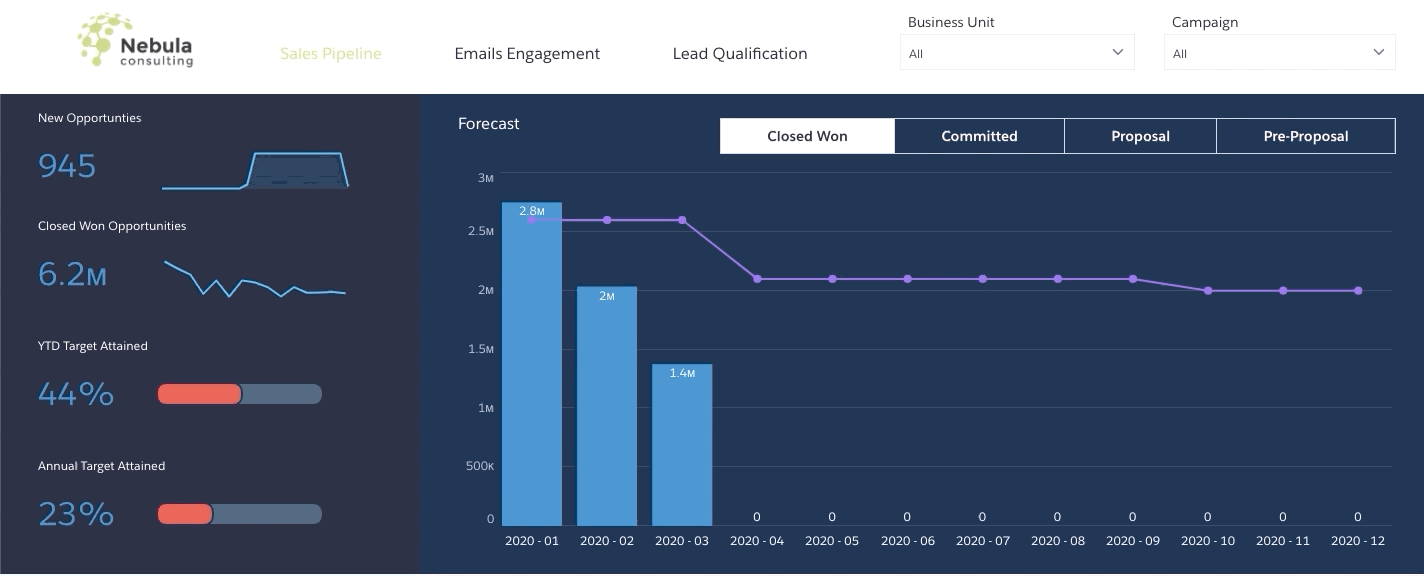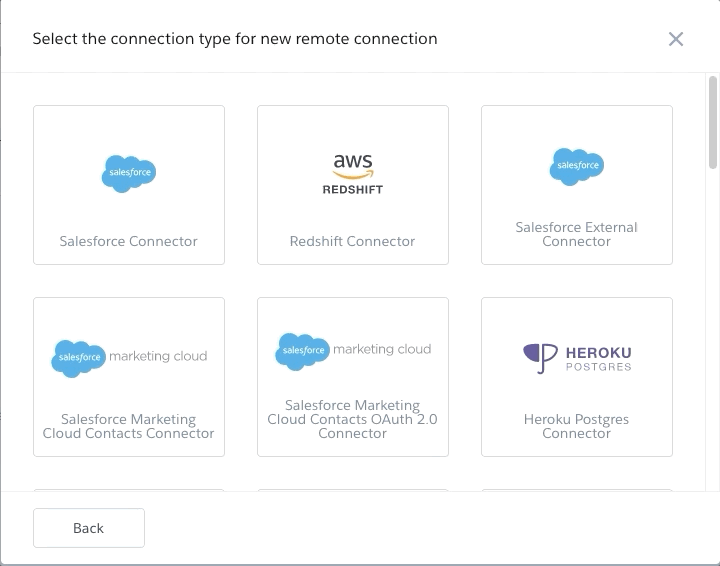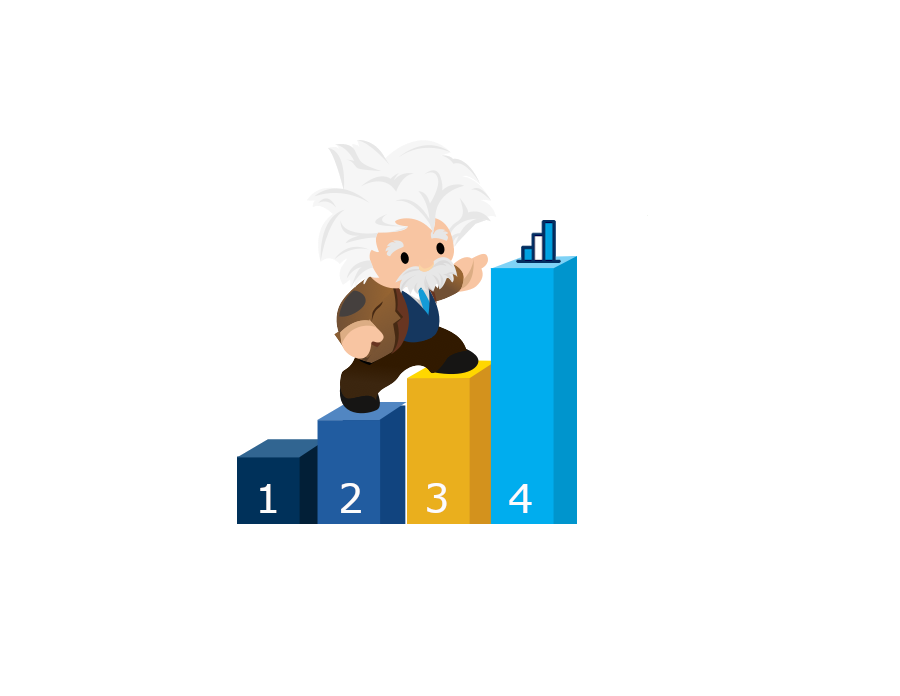One of the most frequently asked questions I get when talking about CRM Analytics (Einstein Analytics) is, “Why should I pay for additional licences when I already have standard Salesforce reports and dashboards?”
This post is here to help you understand if you should invest in CRM Analytics by looking at four common requests that standard Salesforce reporting can’t handle.
1 – Cross-object reporting
Have you ever struggled to build a report using multiple objects at the same time? It is a common scenario when trying to report on all Opportunities and Leads to get a complete pipeline in a single funnel using the lead & opportunity stages. This is something standard Salesforce reports can’t handle. Salesforce’s workaround is to use two reports in two dashboard components next to each other. However, I am sure you will agree; this is not an ideal situation.
CRM Analytics provides you with the ability to create your own sets of data. This means that you can merge multiple objects into a single dataset. As you have a single dataset, you can create a funnel that starts with lead stages and moves onto opportunity stages. As such, this is a lot more powerful than custom report types in Salesforce.
This process is not only relevant to Leads and Opportunities. You can use this technique on almost any object in Salesforce as long as you have a unique identifier to link them together.
2 – Interactive dashboards
Effective dashboards drive activity. They should not be there to only view historical data. There is no point reporting on something unless you are going to take action to improve the results.
Salesforce standard reports and dashboards are great for looking at predefined data. However, if you want to interact with that data, you start having issues. For example, if somebody asks, “Could I view this dashboard where source equals website?” or, “I need to set a reminder for that account.” What would you do?
Although it is possible to have basic filters on a standard dashboard, this is limited to 3 filters with up to 10 values.
With CRM Analytics, you can filter and drill down into almost any component, so you can find the data that you need. You have multiple ways of filtering using lists, toggles or even the dashboard components themselves. With the click of your mouse, the dashboard transforms to make it more relevant.
You are also able to perform actions directly from the dashboard by selecting a record; you can create a task or a note and open it if needed. The possibilities are almost endless.
CRM Analytics is designed to entice the user into interacting with it. This can help answer questions on the spot without having to rebuild reports or dashboards. This becomes extremely powerful in meetings where you can answer questions there and then instead of ‘Taking it offline’. Eventually, this results in a cultural change where everybody interacts with data instead of taking it off into their own spreadsheets to manipulate it for hours.
3 – All of your business data in one place
Unless all of the data your business needs to report on is inside Salesforce, you are unable to use standard reports & dashboards. This often leaves you with the choice of multiple places to report on data, or most likely, numerous spreadsheets that are manually updated.
This is where CRM Analytics steps in. Out of the box you can report on your Salesforce data, and with a plus license, you have a multitude of external connectors. These give you the ability to integrate with other cloud-based systems, including Google Analytics, AWS, Azure and Snowflake. If you are a Mulesoft customer, you can incorporate your Mulesoft connectors as well. And the best part? You don’t need to write any code. A simple bit of configuration and you are up and running.
Bringing everybody into a single platform for reporting and removing Excel spreadsheets is a big win. However, a more significant win is the ability to combine all of this data into a single dashboard. By combining your data sources, you can fill in the missing gaps. For example, due to cookies, you may be missing Google Analytics goal completions. However, you can substitute that for Pardot form completions, and Salesforce leads. This helps to build a bigger picture of your data. One that you can take action on.
4 – Analyse lots of data fast
As your business grows, so does the amount of data you hold. Once you start trying to report on transactional data, this starts to become challenging to manage.
The CRM Analytics platform is designed to query a lot of data and fast. With CRM Analytics Plus, you can build reports with billions of rows, and you are not sitting around waiting for pages to load.
Not only is this functionality available at your desktop, but the powerful mobile app also gives you the ability to take your data on the road with you.
When you start to analyse a lot of data like this, you tend to rely on teams of data scientists to help summarise and identify trends. However, with Einstein Discovery, included as part of CRM Analytics Plus, you can add a layer of AI. Einstein Discovery builds statistic models and uses machine learning to identify, surface, and visualise insights into your business data. This adds value to the data that you hold rather than it gathering dust being kept because “You never know when you may need it”.
The ability to report and analyse multiple types of business data and interact with it at speed will not only save time it will support business decisions based on facts, not feelings.
Summary
In summary, if you are struggling to report on your Salesforce data to drive real insights into your business, it is time to start looking into tools that can provide you with the much-needed leg up in data analytics.
CRM Analytics provides you with the ability to create powerful dashboards without having to leave Salesforce. If you would like to discuss your reporting frustrations further, why not get in touch to speak with one of our Salesforce Analytics experts.


